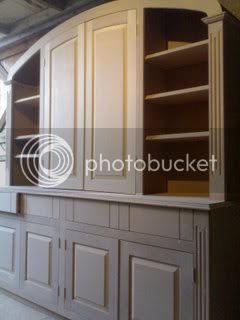toplink
Established Member
I have been commissioned by SWMBO to build some shelves for all our books which are in about 35 boxes at the moment.
I was thinking of making it in a light oak, or similar, in the fashion of a Welsh Dresser, that is shelves on top, cupboards underneath. The cupboards are to hide a lot of A4 box files.
I want to use the whole wall of our dining room which is 3.4m wide and 2.4m tall, no restriction on depth, and the room is quite dark as it only has a small window.
The main problem is this will be my first big project so any suggestions or design tips will by most welcome. :?: :?: :?:
I was thinking of making it in a light oak, or similar, in the fashion of a Welsh Dresser, that is shelves on top, cupboards underneath. The cupboards are to hide a lot of A4 box files.
I want to use the whole wall of our dining room which is 3.4m wide and 2.4m tall, no restriction on depth, and the room is quite dark as it only has a small window.
The main problem is this will be my first big project so any suggestions or design tips will by most welcome. :?: :?: :?:

































